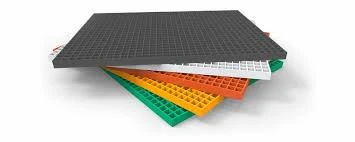
-
 Afrikaans
Afrikaans -
 Albanian
Albanian -
 Amharic
Amharic -
 Arabic
Arabic -
 Armenian
Armenian -
 Azerbaijani
Azerbaijani -
 Basque
Basque -
 Belarusian
Belarusian -
 Bengali
Bengali -
 Bosnian
Bosnian -
 Bulgarian
Bulgarian -
 Catalan
Catalan -
 Cebuano
Cebuano -
 China
China -
 China (Taiwan)
China (Taiwan) -
 Corsican
Corsican -
 Croatian
Croatian -
 Czech
Czech -
 Danish
Danish -
 Dutch
Dutch -
 English
English -
 Esperanto
Esperanto -
 Estonian
Estonian -
 Finnish
Finnish -
 French
French -
 Frisian
Frisian -
 Galician
Galician -
 Georgian
Georgian -
 German
German -
 Greek
Greek -
 Gujarati
Gujarati -
 Haitian Creole
Haitian Creole -
 hausa
hausa -
 hawaiian
hawaiian -
 Hebrew
Hebrew -
 Hindi
Hindi -
 Miao
Miao -
 Hungarian
Hungarian -
 Icelandic
Icelandic -
 igbo
igbo -
 Indonesian
Indonesian -
 irish
irish -
 Italian
Italian -
 Japanese
Japanese -
 Javanese
Javanese -
 Kannada
Kannada -
 kazakh
kazakh -
 Khmer
Khmer -
 Rwandese
Rwandese -
 Korean
Korean -
 Kurdish
Kurdish -
 Kyrgyz
Kyrgyz -
 Lao
Lao -
 Latin
Latin -
 Latvian
Latvian -
 Lithuanian
Lithuanian -
 Luxembourgish
Luxembourgish -
 Macedonian
Macedonian -
 Malgashi
Malgashi -
 Malay
Malay -
 Malayalam
Malayalam -
 Maltese
Maltese -
 Maori
Maori -
 Marathi
Marathi -
 Mongolian
Mongolian -
 Myanmar
Myanmar -
 Nepali
Nepali -
 Norwegian
Norwegian -
 Norwegian
Norwegian -
 Occitan
Occitan -
 Pashto
Pashto -
 Persian
Persian -
 Polish
Polish -
 Portuguese
Portuguese -
 Punjabi
Punjabi -
 Romanian
Romanian -
 Russian
Russian -
 Samoan
Samoan -
 Scottish Gaelic
Scottish Gaelic -
 Serbian
Serbian -
 Sesotho
Sesotho -
 Shona
Shona -
 Sindhi
Sindhi -
 Sinhala
Sinhala -
 Slovak
Slovak -
 Slovenian
Slovenian -
 Somali
Somali -
 Spanish
Spanish -
 Sundanese
Sundanese -
 Swahili
Swahili -
 Swedish
Swedish -
 Tagalog
Tagalog -
 Tajik
Tajik -
 Tamil
Tamil -
 Tatar
Tatar -
 Telugu
Telugu -
 Thai
Thai -
 Turkish
Turkish -
 Turkmen
Turkmen -
 Ukrainian
Ukrainian -
 Urdu
Urdu -
 Uighur
Uighur -
 Uzbek
Uzbek -
 Vietnamese
Vietnamese -
 Welsh
Welsh -
 Bantu
Bantu -
 Yiddish
Yiddish -
 Yoruba
Yoruba -
 Zulu
Zulu
frp tee
Understanding FRP Tees Their Importance and Applications
Fiber Reinforced Plastic (FRP) is an innovative material that has gained significant traction in various industries due to its impressive properties such as lightweight, corrosion resistance, and high strength-to-weight ratio. Among its many forms, the FRP tee stands out as a crucial component utilized in piping and structural applications. This article aims to delve into the significance of FRP tees, their manufacturing process, and their wide-ranging applications.
.
One of the primary advantages of using FRP tees is their exceptional resistance to corrosion. Unlike traditional metal pipes that can rust or degrade in harsh environments, FRP materials can withstand aggressive chemicals, UV exposure, and various environmental conditions. This makes them particularly valuable in industries such as chemical processing, water treatment, and oil and gas. For instance, in the chemical industry, FRP tees are often employed to transport corrosive substances without the risk of leaking or failure.
frp tee

Furthermore, the lightweight nature of FRP tees facilitates easier installation and handling. Compared to metal fittings, FRP components can significantly reduce the overall weight of piping systems, translating to decreased installation costs and improved efficiency. The reduced weight also lessens the load on supporting structures, allowing for more flexibility in design and layout.
In addition to their physical properties, FRP tees offer excellent thermal insulation, which can lead to energy savings in temperature-sensitive applications. For example, in the HVAC sector, these fittings help maintain consistent temperature levels while minimizing energy loss, contributing to more sustainable operational practices.
The versatility of FRP tees extends beyond mere piping applications. They have found use in architectural designs, civil engineering, and even aerospace industries, where their unique properties can be leveraged to meet specific project demands.
In conclusion, FRP tees represent a significant advancement in materials technology. Their blend of lightweight strength, corrosion resistance, and thermal insulation properties makes them an ideal choice for a variety of applications. As industries continue to seek more durable and efficient materials, the role of FRP tees is poised to expand further, paving the way for innovative solutions in resource management and sustainable development. Understanding and utilizing FRP tees is essential for engineers and project managers aiming to enhance the reliability and efficiency of their systems.
Latest news
-
Exploring the Benefits of Top Hammer Drifter Rods for Enhanced Drilling PerformanceNewsJun.10,2025
-
High-Precision Fiberglass Winding Machine for GRP/FRP Pipe Production – Reliable & Efficient SolutionsNewsJun.10,2025
-
FRP Pipes & Fittings for Shipbuilding - Corrosion-Resistant & LightweightNewsJun.09,2025
-
Premium FRP Flooring Solutions Durable & Slip-ResistantNewsJun.09,2025
-
Premium Fiberglass Rectangular Tanks Durable & Lightweight SolutionNewsJun.09,2025
-
Tapered Drill String Design Guide Durable Performance & UsesNewsJun.09,2025









